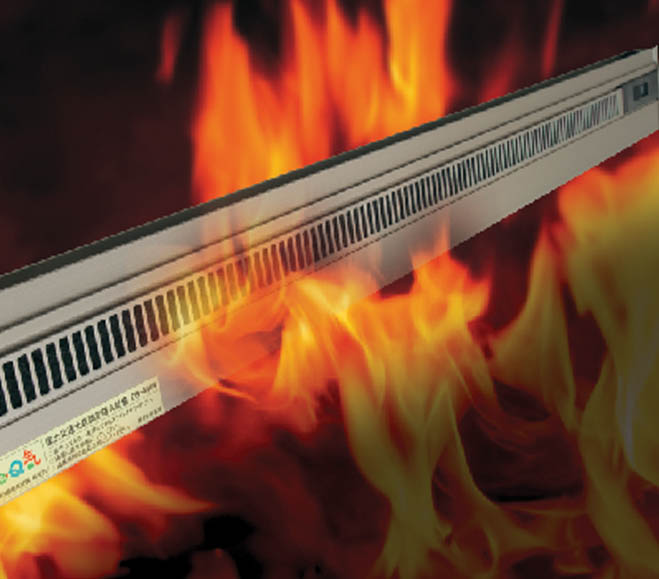The Ventient Solution
Ventient devices can be used as part of a natural, mixed mode or other mechanical ventilation approach making use of outdoor/indoor pressure differentials to introduce fresh outside air.
Using state-of-the-art passive temperature perception technology, Ventient is an environmentally friendly technology that does not require the use of electric power or sensors. In utilising the physical characteristics of a unique Shape Memory Alloy (SMA), Ventient can adjust the volume of ventilation levels depending on ambient temperature.
Ventient usually works in automatic mode but most devices will also offer the ability for occupants to manually close off ventilation if required. The devices can also be easily accessed for maintenance and to clean or replace filters.
Key benefits
- Maximise the benefits of passive ventilation
- No reliance on occupants to set and manage
- No electric power or sensors required
- Potential for reduced cooling loads
- Occupants can override to manually operate
- Operates even when the space is not occupied
- Lower noise pollution than open windows
- Option for filters to reduce particle content of ventilated air No fear of intruders
- Works where operable windows cannot or are not being used
- No need for fly screens
- Child safety
- Very simple installation
- Prevents possessions or documents from flying out the window or falling on passers by.
Ventient for Curtain Wall & Windows
A key advantage of window trickle vents is that most rooms have at least one window so no additional penetrations in the building envelope are required to provide background ventilation. Ventient trickle vents can be integrated into both windows and curtain walls.
There are three typical product options.
Integration of standard devices
The Ventient SCW range of vents has a strong track record dating back to 2006 with extensive use in high rise buildings in Japan. These devices can be mounted in any orientation into conventional window systems or as a part of a curtain wall with vents located to the sill, transom, head or vertically into the mullion or jamb. To accommodate the Ventient device and create an effective pathway for the passage of air from the exterior, will require some design integration and possibly new extrusions.
Glazed in trickle vents
Several devices are available to fit into the glazing pocket of the window frame and couple with the glazing or IGU. Aluminium, PVC or hybrid options are available and when combined with optional custom interior and exterior covers, will integrate seamlessly with the window design.
Custom design
As part of a product development process we will work with window manufacturers to design and test new devices to provide a unique custom solution. OEM customers include major global manufacturers such as YKK-AP and LIXIL.
Performance and Testing
Just like an open window, ventilation by its very nature forms a break in the continuity of the building envelope. It is therefore important to test and fully understand how a Ventient device impacts on air and water tightness, structural integrity and acoustic performance.
PGA and Sahara will work with window manufacturers to ensure that when integrated into a window or curtain wall design that local standards and building code requirements can be met.
Sahara has worked with their customers to supply and test products that need to survive Japanese extremes including typhoons, heavy seasonal rainfall and earthquakes. This experience assists in the optimal integration of Ventient into the curtain wall, window or building design anywhere in the world.
Manufacture
All Ventient devices are 100% designed, manufactured and assembled in Japan by Sahara to meet strict quality control requirements.
Testing
The Ventient SCW-NS device for example, as an individual unit has been tested as follows.

By avoiding the unnecessary provision and operation of mechanical systems at times and in places where passive ventilation could achieve the task more efficiently, Ventient can lower energy use and associated greenhouse gas and pollutant emissions.

Ventient can help manage indoor humidity to prevent mould and mildew forming in your building.

For further protection against fire, an intumescent material can be added which will expand to fill the opening when it reaches high temperatures, as experienced in a fire.
![]() Water Tightness
Water Tightness
1,500Pa of wind driven rain in accordance with JIS A 1517 : No water ingress when closed. Dampers can be integrated to achieve high water tightness with the unit remaining open.
![]() Air Tightness
Air Tightness
100Pa of positive and negative wind pressure in accordance with JIS A 1516 : No measurable air leakage
![]() High Wind Loads
High Wind Loads
3,600Pa of positive and negative wind pressure in accordance with JIS A 1515 : less than 0.2mm deflection.
![]() Noise
Noise
Acoustic testing in accordance with JIS A 4706. Some Ventient devices can integrate additional acoustic absorbent material to improve acoustic performance with Ventient remaining open.
